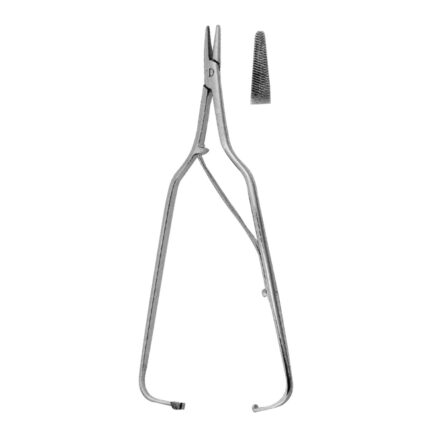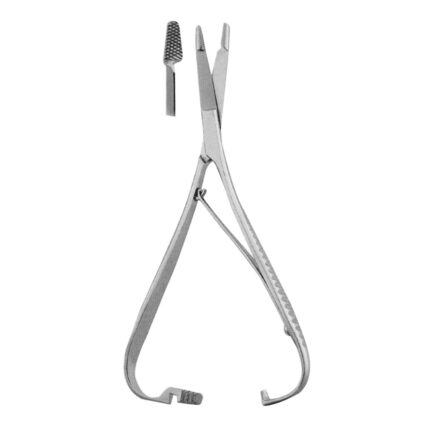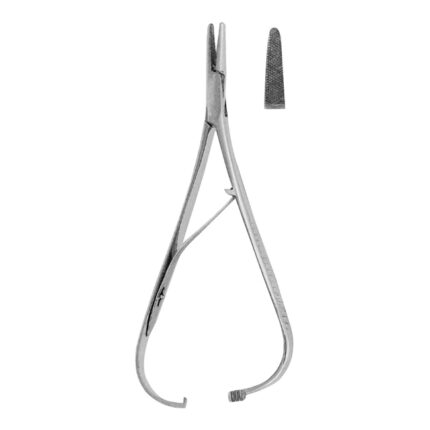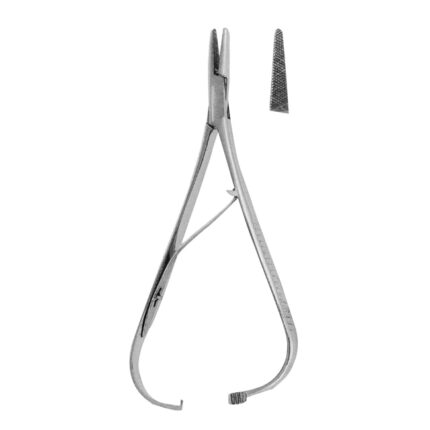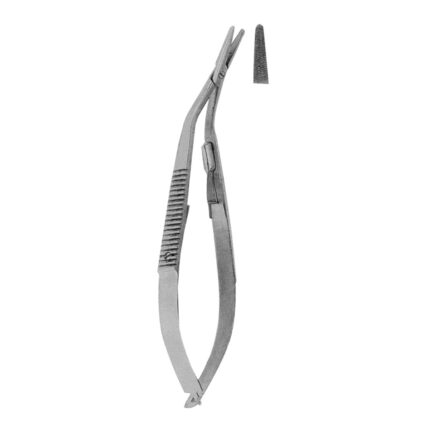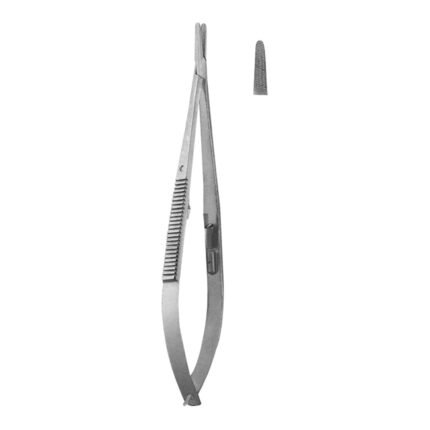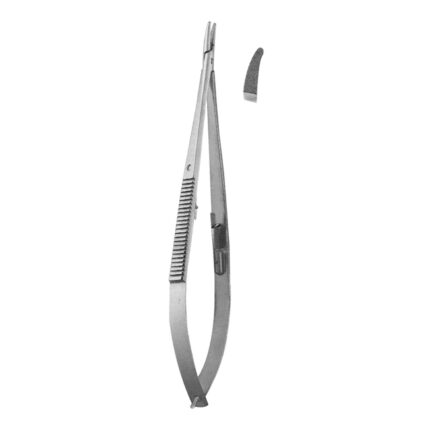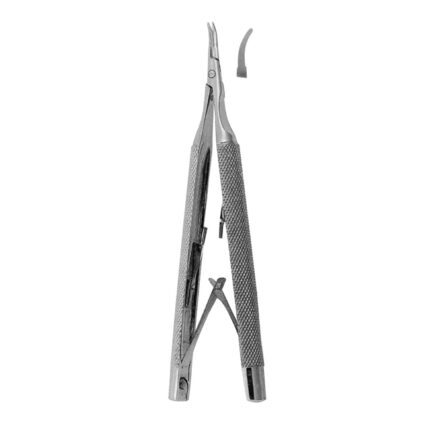Needle holders, also known as needle drivers, are surgical instruments used in various medical procedures, particularly in surgeries involving suturing or stitching. They are designed to grasp and manipulate surgical needles securely during suturing, allowing surgeons to accurately pass the needle through tissues and create precise stitches. typically consist of two main components:
- Jaws: The jaws of a needle holder are the working end of the instrument and are designed to securely grip the surgical needle. They usually have serrated or textured surfaces to provide a firm hold on the needle, preventing slippage during suturing. The jaws may be straight or curved, depending on the specific surgical technique and the surgeon’s preference.
- Handle: The handle of a instrument that the surgeon holds and manipulates during the procedure. It is designed for comfort and ergonomic grip to allow for precise control and dexterity when suturing. Handles may have various designs, including ratchet mechanisms or spring-loaded handles, to facilitate easy opening and closing of the jaws.
Needle holders come in a variety of sizes and styles to accommodate different surgical needs and techniques. Some common types of include:
- Mayo-Hegar : These have straight jaws and are commonly used for general surgical procedures.
- Olsen-Hegar : These combine a needle holder with built-in scissors, allowing surgeons to grasp needles and cut suture material without switching instruments.
- Castroviejo needle holders: These needle holders have delicate, fine tips and are often used in microsurgical procedures or delicate surgeries requiring precise needle manipulation.
Proper selection and use of needle holders are essential for achieving successful surgical outcomes. Surgeons must ensure that needle holders are properly maintained, cleaned, and sterilized to prevent contamination and ensure patient safety during surgical procedures.


